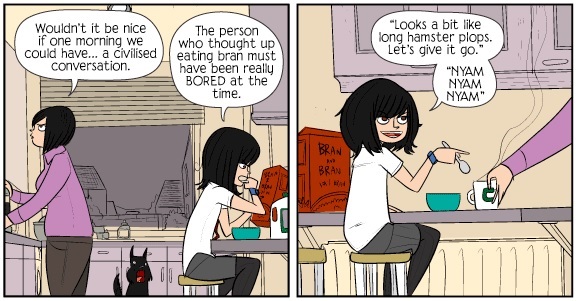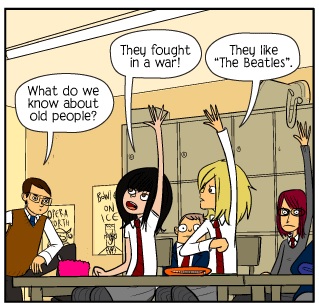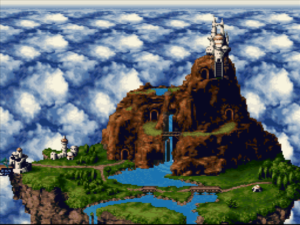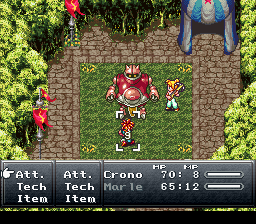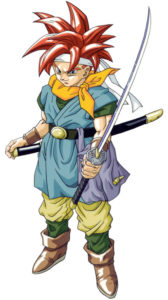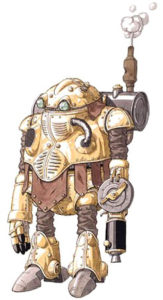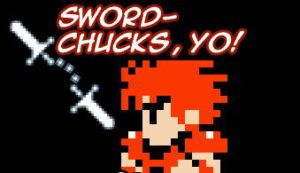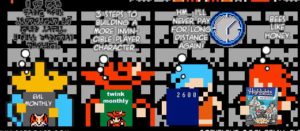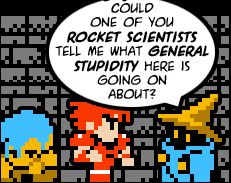If you follow my blog, you probably know that I belong to The Church of Jesus Christ of Latter-day Saints (commonly known as Mormons). Likewise, you probably know that I have an interest in comparative religion. As such, I thought it might be of interest to some of you if I were to give a brief introduction to Mormon cosmology.
Now, what do I mean by “cosmology”? Cosmology generally refers to the nature and origins of the universe. As such, I will attempt to talk about the nature of God and man, the nature of good and evil, and a Mormon answer to the question of what the purpose of life is. I will not be talking in any but the most general terms about The Book of Mormon, Joseph Smith, or church organization. Similarly, I won’t be addressing truth claims. The point of this post is not to prove the truth of LDS doctrines, simply to present some of them within a framework.
Let me also say that Mormonism is an active, living religion. As such, different members of the church have different interpretations of its doctrine. As such, almost any point I make could be disputed by someone. Furthermore, I am an active participant in this religion. As such, my understanding of Mormon doctrine has changed over time, and I expect it to continue to do so. So rather than presenting “LDS Cosmology,” perhaps it might be better said that I am presenting “LDS Cosmology as Interpreted by Me at This Time.”
Finally, let me just note that within this post, I use the terms LDS and Mormon fairly interchangeably. There are stylistic reasons for doing this, but I won’t go into them. Let it suffice to say that the proper name of the church is The Church of Jesus Christ of Latter-day Saints but that the proper name is super long and doesn’t have a good adjectival form, so I have been forced to make stylistic choices.
Anyway on to the fun stuff.
A Brief Sketch of the Nature of God
The LDS church believes in the existence of three beings who make up what we call the “Godhead” but which are often referred to in other Christian faiths as the Trinity: God the Father, Jesus Christ, and the Holy Ghost. Unlike many Christian churches, we believe that the three are distinct individuals, although united in purpose. I will talk about each of these individuals in turn.
The most fundamental doctrine of the LDS church regarding God is that He is our Father. This is not an unusual title for a religion to use when referring to God, but Mormons use the title more literally than most. We believe that God is fundamentally the same sort of being that we are and that He has undergone a process of mortality similar to that which we are going through. We believe that God is married to a Heavenly Mother and that while They may not be our physical parents, they are the parents of our spirits. We believe that God loves us and will give us personal guidance in our lives if we seek it.
Because we see God as a being similar to ourselves, there are some doctrines other faiths hold that we do not. Our fundamental view of God is not as someone who creates ex nihilo–out of nothing–but rather as someone who uses preexisting materials to create His works, as a potter makes a bowl out of already-existing clay. Likewise, we do not view God as the origin of truth and goodness, but as someone who has come to embody all good principles by strict adherence to them. And we believe that God’s power is due to His adherence to these virtues.
Likewise, because we view God as our Father with attributes similar to ours, who came to His position through observing moral laws, we believe that we too may attain these heights and that this is, indeed, the very purpose of our lives. As Lorenzo Snow (president of the church in the late 19th century) said, “As man now is, God once was: As God now is, man may be.”
Let us move on to the person of Jesus. We believe that Jesus is, like all of us, a child of God in spirit, though we also hold that He is a literal child of God in a physical sense as well. We believe that He acts and has acted under close supervision from our Father in Heaven as a sort of executive officer for the Earth, even before His birth. We believe He fulfilled a divine role in His mortal life as Savior and Redeemer (to be discussed at a later point) and that He knew what He was getting into before being born and chose His role consciously.
And finally, let us talk a little about the Holy Ghost. This being is somewhat enigmatic, but we believe that He acts as sort of an incorporeal messenger from God. In this role, He does many things–bringing divine comfort, testifying of truth, prompting us to make good decisions, etc. Since the primary focus of this article is cosmology rather than LDS beliefs on the nature of personal revelation, I won’t go into more detail on this whole thing, but I feel that any description of the Godhead ought to at least mention the Holy Ghost. One last note of some interest is that Mormons believe that the Holy Ghost is–like us and Jesus–a spirit child of God. We believe that he has yet to come to Earth and gain a body. As for who He is, we really don’t have any details. He’s talked about scripturally in a less personal, more utilitarian manner, so there’s a lot we don’t know.
And now on to us.
Pre-Mortal Life
LDS theology holds that in some form we have always existed, but that at some point, our Heavenly Parents formed us into spirits (recall that God does not create ex nihilo but rather from preexisting materials). What exactly this means is unclear, as is the process by which this happened, though I think a reasonable assumption is that the process is at least in some way analogous to our earthly conception and birth.
At some point in our pre-mortal existence, God proposed a plan to us whereby we could do as He had once done and be born into bodies of flesh and blood, grow and experience mortal life and all the joys and trials relevant thereto, and ultimately die, becoming, through this process, more similar to our Heavenly Parents, and achieving more of our potential. All people who have lived on this earth accepted this plan, though there were some of God’s children who did not, among them Satan.
(Let me make a parenthetical note here about Satan: the LDS church does believe in the existence of Satan, but the more I learn, the less confident I am as to just what Satan’s deal is. That said, his general role is what you might expect: rebelling against God, tempting people, etc. Anyway, I think most of LDS cosmology can be told without reference to Satan at all, so this may be the last time we hear about him in this post.)
Once we had accepted the plan, God created the world so that the plan could go into motion. Now I need to make two addenda to that statement. First, LDS doctrine is that God has created many worlds for His children and that ours is just one of them. Second, one of the more beautiful Mormon teachings (in my view at least) is that when God was creating the world, we were active participants in that process, with Jesus (who had already volunteered for his eventual role as Savior and Redeemer of the world) acting as sort of a foreman.
The Garden of Eden
The Garden of Eden is one of the central myths in Christianity. In its basic form, the story goes something like this: When God created the world, He made a paradisaical garden without death or injury and placed Adam, the first man, and Eve, the first woman, within this garden, with the instructions that they were allowed to eat from any tree in the garden beside the Tree of the Knowledge of Good and Evil. Eve is tempted by the “serpent” (traditionally accepted as Satan) into eating the fruit of the Tree of the Knowledge of Good and Evil, with the promise that if she does, she “shall be as the gods, knowing good and evil” (Genesis 3:5). Eve partakes of the fruit and goes to Adam to share it. Adam is torn between following the instruction to avoid the fruit and the instruction to cleave unto his wife, knowing that for the violation of the fruit taboo she will be banned from the garden. He chooses to stay with his wife and eats the fruit. Surprisingly, the serpent’s words turn out to be accurate, and Adam and Eve’s eyes are indeed opened to the knowledge of good and evil. They also become subject to eventual death. God, seeing that they have eaten of the fruit, makes them leave the garden.
While Mormons generally agree with the mainstream Christian view of what the events were, we differ in some major respects in our interpretation of what the events mean.
Most importantly, Mormons see the “fall of Adam” as a positive thing all around. If the purpose of life is to undergo all of the spectrum of mortality so we can learn to value the good over the evil (as we firmly believe to be the case)–eventually leading us to become beings who, like God, do not merely choose good out of ignorance or because we are told to but because we truly value goodness–then we must see the acquisition of firsthand knowledge of good and evil as a positive. In the garden, Adam and Eve were in a childlike state of innocence, but like all of us had to move past being children to a state of knowledge, where they could make informed right choices. As such, Mormon rhetoric regarding Eve tends to be highly respectful, with the acknowledgement that even without knowing good from evil, she had the insight to know that she should know.
That said, the fall of Adam carried with it many difficult consequences. Adam and Eve were thrust out into a hard, dangerous, strenuous world–one with death and pain and stress. But it was also only through entry into this world that they were able to bring forth humanity.
Now let me head off the inevitable concerns about Biblical literalism and the entirety of the human race being descended from two people. Mormon doctrine is neutral regarding evolution, with the view that God created the world and humanity, and it’s not our job as a religion to say how He did it. As regards the Adam and Eve story, opinions vary among members of the church as to just how literally we’re meant to take it. However, as I hope you’ve been able to see, Mormons value the story of the Garden of Eden largely because of the spiritual truths that it teaches us, including the necessity of individual growth by making choices and experiencing their consequences, both positive and negative. We are instructed to try to see what lessons we can learn from the story and to see ourselves in Adam and Eve.
The Atonement of Jesus Christ
As you may recall from the beginning of this post, the full name of the church we’re dealing with is The Church of Jesus Christ of Latter-day Saints. As such, it should not surprise anyone that Jesus would be a central figure in this article.
The story of Jesus is central to the LDS church. We regard Him as the son of God in a physical sense as well as a spiritual one. We also believe Him to be the only perfect person ever to have walked the earth. We regard Jesus as an example to follow throughout our life, and as such, we treasure the glimpses of His life and teachings that we get in the scriptures. But for us, His crowning glory and the act which earns Him our deepest reverence is His performance of what we call the Atonement.
The word “atonement” comes from the idea of setting two things “at one”–in this case God and man (and yes, that is the etymology, tacky though it may seem). The idea is: because of the fall of Adam, man became separated from God by death and sin–not that we inherit the sin of Adam and are born guilty (as many Christian sects assert) but that due to our own free will and the knowledge we have received of good and evil, we will each, inevitably, fall short of perfection. However, God is perfect, and if we are to return to live with Him, we must be as well. So sin, death, and any other flaws must be eventually overcome if we are to return to live in God’s presence. Hence the need for some sort of atonement. This is where Jesus comes in.
Mormon doctrine teaches that before the creation of the world, God knew that we would be imperfect and need to be able to overcome that and that, as a result, an atonement must be made. This was a crucial part of the plan that God presented to us before our birth. Fortunately for each of us, when God presented His plan, explaining that someone would need to make a tremendous sacrifice to metaphorically balance the cosmic scales, Jesus volunteered for the role, although He knew that it would require great pain and suffering on his part.
So when the time was right, Jesus was born to a mortal mother and divine father. He grew up, “[increasing] in wisdom and stature, and in favor with God and man.” (Luke 2:52) In order to be worthy to perform such a sacrifice for mankind, Jesus kept Himself sinless. At the age of 30, He started His ministry. For the next three years, He traveled around preaching and performing miracles. Which brings us to the last week of His life.
Though most of Jesus’ life had been spent in Galilee, He spent the last week of His life in Jerusalem, where He had traveled for the celebration of the Passover. I could spend a considerable amount of time telling the story of the last week of Jesus’ life. Instead, I will try to restrain myself and only give a brief overview. He arrived on Sunday and spent the next few days in the city. On either Wednesday or Thursday (there’s some debate as to which), He held what has come to be known as the Last Supper. There, He famously washed the feet of His disciples, prophesied that He would be betrayed, and held a ceremonial meal where bread and wine symbolizing Jesus’ flesh and blood were consumed. Afterwards, Jesus retired to a place called Gethsemane to pray. Upon finishing His prayer, Jesus was found by an armed mob that had been led to Him by Judas Iscariot, a disciple of Jesus who had been with Him at the Last Supper just earlier that evening. The mob (made up of various members of the Jewish establishment who felt threatened by Jesus) seized Jesus and brought Him before Pontius Pilate, the local Roman ruler, because the Sanhedrin–the Jewish ruling body–lacked the authority to sentence someone to death. Pilate, largely for political reasons, acquiesced and ordered Jesus executed. He was crucified on Friday. Because the next day was the Sabbath and there were various prohibitions related to it, Jesus’ body was taken down from the cross that day and placed in a tomb. On Sunday, some women went to the tomb only to find it empty. It was then revealed (either by an angel or by Jesus himself depending on the account) that Jesus had risen from the dead. He proceeded to reveal Himself to various sets of disciples before eventually ascending to heaven.
Like most Christians, we attribute great significance to Jesus’ death and resurrection. We believe that through Jesus’ resurrection, He conquered physical death so that at some point each of us may also be resurrected. However, we also place significance on Jesus prayer in Gethsemane and believe that through that prayer, Jesus took upon Himself the sins and pains of the world so that if we turn to Him, He can carry our burdens and allow us to be forgiven of our sins and changed spiritually to become greater than we could be otherwise. These two acts and their resulting effects constitute the Atonement.
Mortal Life
Fundamentally, Mormons believe that life is about choice. We constantly make choices, and with each choice we make, we determine what sort of person we are. Sometimes our choices are difficult ones, and if this life is about becoming more like God, the task can seem daunting. However, God has given us tools to help us along that path.
The first tool I’d like to talk about are commandments. These are explicit instructions for us on how to live in a moral and godly manner. They include things like not killing people, loving our neighbors, and being honest. These are communicated to us through prophets, people who have been chosen by God as His spokespeople on the earth. Mormons believe the scriptures (usually defined as the four books, The Bible, The Book of Mormon, The Doctrine and Covenants, and The Pearl of Great Price) to contain the words of such prophets, but we also believe that the church is led by prophets in our modern day.
We’ve also been given personal revelation. It is a fundamental belief of the LDS church that any one of us is entitled to receive revelation from God as to how to live our lives. Rarely does that take the form of an angel coming down to us or a voice speaking from heaven. More often it comes as a quiet impression in our soul, usually as the result of prayer and contemplation. Whatever the form, Mormons assert that God will answer sincere prayer.
There are also things that we call “ordinances”–sacred rituals that we engage in. Typically these ordinances have covenants attached to them, wherein we promise to do various things–typically promising to live according to certain standards–and God promises things in return, typically additional spiritual strength and guidance. I could spend a paragraph on each of these ordinances, but that might be a little outside the scope of this post. Instead, let me just give a brief overview of several of these ordinances. The main ordinances that are talked about are baptism and confirmation (which serve as an entry to the church and result in more constant spiritual guidance by the Holy Ghost), the reception of the priesthood (the authority to act in God’s name in the performance of ordinances), the reception of the endowment (more complicated than I can really get into here, but basically receiving more spiritual power), and celestial marriage. Both the endowment ceremony and the marriage ceremony can only be performed in places called temples, which are buildings specifically sanctified for the performance of these ordinances.
The one ordinance I will talk about in greater detail here is that of celestial or temple marriage. LDS theology holds that families are central to the nature of eternity. The purpose of temple marriage is to “seal” a couple together so that it becomes an eternal unit. Similarly, in the temple, we also seal parents to children to create eternal families.
Lastly, there is the Atonement of Jesus Christ. None of us can live up to all the things we should be doing, but Mormons believe that by turning to Jesus and allowing Him to carry our burdens we can change who we are, give up the parts of ourselves that we want to be rid of, and eventually, gradually leave all of our flaws behind. When one drops a plate and it shatters into pieces, one can sometimes glue the plate back together, but the plate will never return to being whole: the plate will forever bear the marks of its fall. Likewise, when we make mistakes in this life, it leaves scars on us, sometimes outwardly visible, sometimes not. However, unlike the plate, we can be completely healed and our scars erased, but only through the atonement of Jesus Christ.
Let me close the section on mortal life by saying that while talk about commandments and covenants can sound very restrictive, life isn’t meant to be miserable. There is a verse in the Book of Mormon that says “Adam fell that men might be; and men are, that they might have joy.” (2 Nephi 2:25) God is our father and wants us to be happy, and the commandments that He gives us are directions on the way of life that He has found to result in the most lasting happiness.
That said, some degree of pain and sorrow is inevitable in our lives. We all face difficult times, often through no fault of our own. However, it is in our hardest times that we have the greatest capacity for growth. Adam and Eve’s choice in the garden was that of a world of great trial but great reward above that of easy complacency. Similarly, before our births, each of us agreed to come down to earth to experience mortality knowing that at times it would be overwhelming yet longing for the chance to become more like our Heavenly Parents. And ultimately, even in our deepest tribulations, we can feel peace through the tools our Father has given us.
The Spirit World
Each religion must somehow deal with the question of what happens to those who aren’t members of that religion. The spirit world is the LDS answer to that question.
When we die, our spirits separate from our bodies. Our spirits proceed to a place (or perhaps a state) called the spirit world, where we await our eventual resurrection. During this time, those who accepted the fullness of the gospel of Christ will teach those who did not. Eventually, through this process, every person who has ever lived on the earth will have the opportunity to learn about and take advantage of Christ and His Atonement as well as learning about other important doctrines.
Meanwhile on earth, Mormons are doing genealogy. The purpose of this is to discover people in the past who never engaged in the various saving ordinances (each of which is necessary to engage in to unlock our full potential and become like God). Then, when these people have been found, members of the LDS church go to the temple and perform ordinances on their behalf. After these proxy ordinances have been performed for a person, that person may make the choice at any time to accept the ordinances that were done on their behalf and enter into the covenants pertaining thereto.
The Second Coming of Jesus Christ
Like most Christian faiths, the LDS church believes that at some point, Jesus will return to Earth again to usher in a period of peace and righteousness. During this time, there will be no wars or sickness, people will live a long time, and there will be constant open communication between Earth and Heaven. This communication will allow for many errors to be corrected. Those who could not be found through genealogy will be known so that eventually, every person who ever lived on the Earth will have the saving ordinances done on their behalf. Essentially, the Second Coming will provide a period to tie up loose ends prior to the eventual end of the world in its current state as well as providing a happy ending to look forward to.
Resurrection and Judgment
Mormon doctrine holds that at some point, each of us will be resurrected. Our resurrected bodies will be perfected versions of the ones we have now, devoid of the various physical flaws we have here. Then, once we have been resurrected, we will be judged.
The purpose of this judgment will be to determine where we go from here. This is a more complicated proposition than the typical Heaven and Hell scenario of most Christian traditions. Typically as Mormons, we divide our afterlife options into three “kingdoms of glory” and “outer darkness,” but since most of the kingdoms of glory have various different degrees within them, we can say simply that there are a lot of different places to which we can go. With the exception of the highest degree of the Celestial Kingdom (the subject of the next section), these places aren’t particularly elaborated upon. That said, we do know that each of the kingdoms of glory is a significantly better place than Earth.
What determines which of these various places we go to is us. When we are judged, God will look upon us, knowing our actions, our thoughts, and our desires. He will see the choices we made in mortality and know perfectly the people that we have become. Using that knowledge, God will assign us to the place where we will be happiest. If we are people who have followed God’s commandments, received the required ordinances, and learned to truly love the way of life that all of that entails, God will send us to the Celestial Kingdom, where we can learn to become more like Him. If we reject God and goodness completely, we will go to Outer Darkness. If we fall somewhere in-between, we will go either to the Terrestrial or Telestial Kingdom depending on the degree to which we embraced a Godly lifestyle. And within those kingdoms there are many different degrees, allowing us to reside in a place that will be comfortable to us.
The Celestial Kingdom
Throughout this article, we’ve viewed life as a progression. From pre-mortal spirit beings to mortal beings, to resurrected beings, learning and growing in each stage. The Celestial Kingdom is a continuation of that progression, providing a stage for learning how to become like our Heavenly Parents.
In the Celestial Kingdom, there will be many opportunities to learn. We will have the knowledge of the universe opened up to us with God as our teacher. As we work in our heavenly studies, we will become ever closer to the ultimate goal of our enterprise: to bear spirit children and create worlds for them to live on.
The bearing and rearing of children is, of course, not a solitary pursuit. As such, the fundamental unit of the eternities is not the individual but the couple and the family that extends outwards from that couple. And since we in LDS temples engage in sealing parents to children, what we wind up with is one family of mankind, bound together in love.
Which brings us to the end. I have, of course, had to abridge the subject greatly in order to address it in anything like a concise manner. That said, I think this ought to give one a decent idea of the sections of Mormon belief that I have chosen to call cosmology. I hope that this has been interesting and that you have come out of it with some sense of the internal logic and what it is about this cosmology that Mormons find appealing.
If you have any questions, I’d be happy to answer them in the comments, though I reserve my right to delete any comments that are inflammatory. When one deals with an active religion, one must do so from a position of respect, and I expect that of all of my readers.
Thank you.
